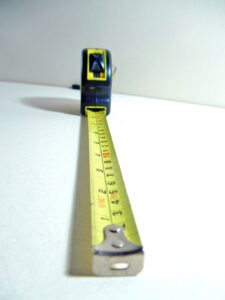
Would you run your business without looking at a financial statement? Crazy right? Do you know how many customers your sales team talks to every week? For many organizations, they don’t know the answer and are leaving thousands of dollars on the table for a competitor to get. This article outlines the process to create a measuring system.
A sales driven organization takes time, energy and the correct vision to have a highly competent team. Becoming effective in sales and marketing of your business requires an understanding of your customer base so you can focus the team on what matters the most.
In many business environments, there are typically four categories of customers that can be measured:
New Customer
This customer is one who has never been to or called or emailed your business before. They may call, email or come into your business from marketing and advertising efforts. This customer forms an impression of your business through every interaction they have. Every interaction. Not just the one where they drive up on your parking lot, but when they call into your business, what they see on Facebook or hear at the local restaurant from a group of customers. Every interaction creates an impression of your business.
Repeat Customer
This is a customer who has bought from you before. To a salesperson, this means that customer bought from them before. To the business, it means that customer purchased from the company previously. Many companies have “orphan owners.” These are customers who bought from a salesperson at your business but who is no longer there. These are typically a gold mine for new salespeople in companies with turnover in the sales department.
Referral Customer
This is a customer who was referred by another customer to your business or the salesperson. I apply the same sales “rules” to this category as I do for repeat customers. This is often an area that is highly underutilized by salespeople to generate revenue. When you have happy customers, they tell others about their experiences. When they tell someone else, and that customer calls or comes into the business, it is essential to train the customer to ask for the right salesperson.
New Business
This customer is one that you meet while at the gas station or a social event. A brief conversation in most any social situation generates new leads. One of the most natural ways to prospect for new business is to just talk to people you meet. It works like magic when done correctly.
For each of these categories, it’s important to know the sales mix in your business. Measure them monthly to determine how many sales were made in each of these categories and by each salesperson.
Relationship Selling Metrics
Let me start this segment by asking you three questions:
- Who do you make more money on, a repeat customer or a customer who has never done business with you or your company before?
- Who do you have the most fun working with, a repeat customer or someone who has never done with business with you before?
- Who do you sell in less time, someone who you don’t know or a customer who’s bought from you before?
Ok, I could ask ten more but let me just give you the answers. Repeat and referral business is where you make money and in less time. Time is money in sales, and by now in your career, someone’s told you that. So, learn how to develop this book of business to be a pro at sales.
Closing Ratios and Measuring Variables
 There are many variables to discussing closing ratios for a salesperson and a sales team such as the type of product or service being sold, the customers buying cycles and personality type to name a few. If you only have twenty customers vs. a hundred or a thousand that makes a difference. So, even though there are variables, there are common points that every salesperson and team should be measured to increase their success and have some fun while doing it.
There are many variables to discussing closing ratios for a salesperson and a sales team such as the type of product or service being sold, the customers buying cycles and personality type to name a few. If you only have twenty customers vs. a hundred or a thousand that makes a difference. So, even though there are variables, there are common points that every salesperson and team should be measured to increase their success and have some fun while doing it.
Do you have a CRM or other Sales Tracking System? Without a sales activity measurement system in place that consists of more than gross margin and sales volume, the ability to make improvements can many times escape even the best intentions. Integrating these systems into your sales and marketing teams are also challenging but required. If you don’t have one, get one.
How many people you talk to vs. how many you close is a crucial measurement in selling a product or service. Just like learning to shoot a free throw or how to stand in the batter’s box, it’s the basics of the profession. Time is an asset, and it must be used efficiently. Future articles will cover more metrics in detail.
What Does This Tell You?
- If a salesperson talks to 6 people a day x 5 days a week, that’s 30 contacts. How many of those do they sell?
- With a 20% closing ratio, they close 6. What happened to the other 24 contacts?
To effect change, you have to look deeper into what the salesperson’s activities and behaviors are between the time they first met the customer until the sales order is signed. To only look at the end of the sales cycle is like jumping in a lake before checking to see if there is enough water in it.
Read my article titled, “Relationship Selling – Steps to the Sale” because how the sale is processed can make a difference in how many deals are closed.
Sold Ratio to Face-to-Face Contacts
The average closing ratio of 20% should be the very minimum standard of sales performance. There should be a focused effort to increase this number regardless of your sales environment.
In a business that has 50% or more repeat customers a 20% closing rate is terrible and should be carefully examined because you are losing customers. With measurement, you learn how “effective” the salesperson or the sales team is and in what areas.
What if you measured 10 sales people and came up with the following scenario:
- 10 salespeople x 6 customers per day x 5 days per week = 300 customers
- At a 20% closing ratio would be 60 sold units.
Let’s say your Average Gross Profit (AGP) per unit is $500.00. Your goal is to increase the closing ratio by 5%. That would be an increase of 15 Units.
15 Units x $500.00 (AGP) equals $7,500.00 of additional profit.
What if?
• What if you improved the closing ratio to 30%?
• What if you improved AGP by 2%?
• What if you improved the closing ratio by 5% and the AGP by 2%?
With just a little focus in the right areas, you can make more money and have more fun doing it. There are no shortcuts to sales success.
Process Improvement: Steps to Gaining More Efficiency in Closing Deals
 To improve salespeople’s closing ratio involves coaching and counseling. Many times, the ratio’s can be improved by helping them become aware of their selling habits. Just like every person does, after we do things for a while, they become a habit. It doesn’t mean it’s good for us. I also know that many salespeople don’t have a dedicated sales manager whose job it is to help them improve. Professional salespeople take it upon themselves to measure and improve.
To improve salespeople’s closing ratio involves coaching and counseling. Many times, the ratio’s can be improved by helping them become aware of their selling habits. Just like every person does, after we do things for a while, they become a habit. It doesn’t mean it’s good for us. I also know that many salespeople don’t have a dedicated sales manager whose job it is to help them improve. Professional salespeople take it upon themselves to measure and improve.
For a Salesperson, you could ask yourself the following types of questions:
- Am I walking the customer through the sales process and fully engaging them in each step?
- Am I prematurely asking for the order or have I properly built value then asked for the order?
- In the past 5 customer experiences, how many of them was I successful in taking them through the entire steps to the sale and closing the deal? For those that I was not successful, why, what happened, what could I have done differently?
For a Sales Manager, you could be asking your salespeople the following types of questions:
- What step in the sales cycle are you in? They should be able to describe clearly where they are and why. If they can’t, they need some coaching.
- Since you’ve priced the customer, what are the top three reasons they want to buy that product and buy it from us? If they can’t tell you it’s because they have not asked during step #2 of the sales process.
- If the customer walked after you gave them a price, what were the customer’s reasons for leaving? Make sure you get what the customer said, not what the salesperson heard.
5 More Tips & Suggestions:
- An old-time rule of sales is that you have to talk to a lot of people to make money in sales. The new rule to add to that is you want to be super productive with each interaction. Time is money. You don’t want to waste your time or your customers. Learn the sales process and use it as many times as you can so you can make more money in less time.
- Make sure to measure your key behaviors accurately. Measure it the same way for a while to accurately assess before deciding on an improvement plan.
- Businesses that log these customer contacts for every interaction outperform those that do not. You wouldn’t run your business without a financial statement, so don’t run it without knowing the sales teams key performance indicators. Tracking the key selling behaviors is a performance statement for the salesperson or sales team that allows you to create improvement plans.
- Knowing the “steps to the sale” allows a salesperson to gauge where they are at in the sales process. By using the process, you build the value of your product and your business by knowing when to insert key value added solutions that your business or product offers.
- It is very common for a customer to ask the first question when they meet a salesperson. That question can be “how much is it?” When you first meet the customer make sure you qualify their wants and needs before pricing your product.
Moving a customer through the sales process naturally creates closes. Improving your closing ratio doesn’t add cost to the sale. It can be as easy as learning how to communicate better. In future articles, I’ll address other key metrics to measure and how to improve your effectiveness.
![]()
